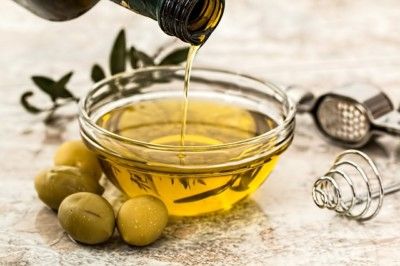Old olive variety and traditional cultivation: Superfood olive oil
Medical studies prove the effective effect of olive oil on high blood pressure, cholesterol and diabetes. In the media enthusiasm often an important detail of these studies is lost: only Olive oils with a high content of secondary plant compounds lead to these positive results.
Cold-pressed olive oil – extra virgin olive oil- differ in quality by the content of secondary plant substances. On average, supermarket olive oil has about one tenth of the phytochemicals and is ineffective in the treatment of cardiovascular diseases.
Perle Noire – Olive oil rich in secondary plant compounds
The still young olive oil brand Perle Noire attaches great importance to the maximum potential of the secondary plant substances in the olive oil. For the Perle Noire olive oil, the old olive variety Chemlali was selected, which is grown according to traditional methods and certified organic in Tunisia and pressed from the first harvest.
The secret of the secondary plant substances
Olive oil served in the Mediterranean for thousands of years as the most important source of fat and provided valuable secondary plant compounds with enormous antioxidant effect – including polyphenols, vitamin E and sterols.
This special cocktail of secondary plant substances originally serves the olive tree as a defense against diseases and pests, provides for its robustness and high resistance and is responsible for the ability to live for centuries. Nowadays olive oils differ especially in the content of secondary plant compounds for the following reasons.
1. Decisive for the content of secondary plant substances is the olive variety
Old olive varieties like the Chemlali olive have a high health value and outperform highly cultivated olive varieties. They date back to a time when there were no aids in the form of pesticides, artificial fertilizers and irrigation. They have a naturally high resistance, which is reflected in an extraordinarily high content of secondary plant substances.
A list of olive varieties and their content of phytochemicals can be found on Olive Oil and Health.
The majority of olive oil on the mass market comes from olive varieties that have been specially bred for super-intensive cultivation. The new olive varieties are more profitable, but they have lost much of their secondary plant compounds and are fragile and vulnerable.
2. The harvest time decides whether the secondary plant substances are preserved or decayed
The ideal time for harvesting is when the green olives change color to purple-black, as this is when the content of phytochemicals is at its highest. A harvest at this time is called first harvest or early harvest.
Only by pressing the olives from the first harvest, the valuable secondary plant substances are preserved and are thus available to humans.
If, on the other hand, olives from the late harvest are pressed into olive oil – as is common for the mass market – 90% of the secondary plant compounds have been degraded by the further ripening of the olive.
3. Traditional olive cultivation for higher olive oil quality and sustainable land use
The traditional olive cultivation takes into account the soil conditions and the existing climate and therefore has an extremely low tree density. In southern Tunisia, in traditional olive cultivation, about 17 olive trees per hectare are grown together with almond trees. Traditionally, only old varieties of olives can be cultivated, as they still have a natural resilience.
The lack of human care has been shown to increase the content of phytochemicals in the olive, whereas artificial irrigation, as is common in superintensive cultivation, leads to a reduction of phytochemicals in the olive.
The best known secondary plant substances in olive oil: polyphenols, vitamins E, sterols
The mutually reinforcing interplay of the individual components has not yet been sufficiently deciphered by researchers. The secondary plant substances of olive oil not only have a general anti-inflammatory effect, but could even play an important role in the prevention and therapy of allergic reactions.
Polyphenols: how z.B. oleuropein, hydroxytyrosol, flavonoids
- strong antimicrobial effect,
- fights bacteria, viruses and fungus,
- protects against cell damage,
- pronounced anti-inflammatory effect,
- Hydroxytyrosol and oleuropein regulates cholesterol levels,
- Flavonoids can inhibit allergic reactions.
vitamin E (alpha-tocopherol):
- increases the stability of olive oil, making it highly heatable,
- has an antioxidant effect by rendering free oxygen radicals harmless,
- protects cell membranes and acts u.a. counteract an early aging process,
- Involved in the formation of red blood cells, muscles and other tissues,
- lowers the risk of cardiovascular diseases.
Sterols:
- inhibit the absorption of cholesterol, thereby lowering the level of cholesterol in the blood by reducing the concentration of LDL in the blood (by 9-14%), while the good HDL cholesterol remains the same,
- protective property against prostate, colon, breast and stomach cancers.
Author: Evelin Krenzer
Managing director
Krenzer & Severing UG (limited liability)
Höllweg 29
D- 65439 Flörsheim on the Main
